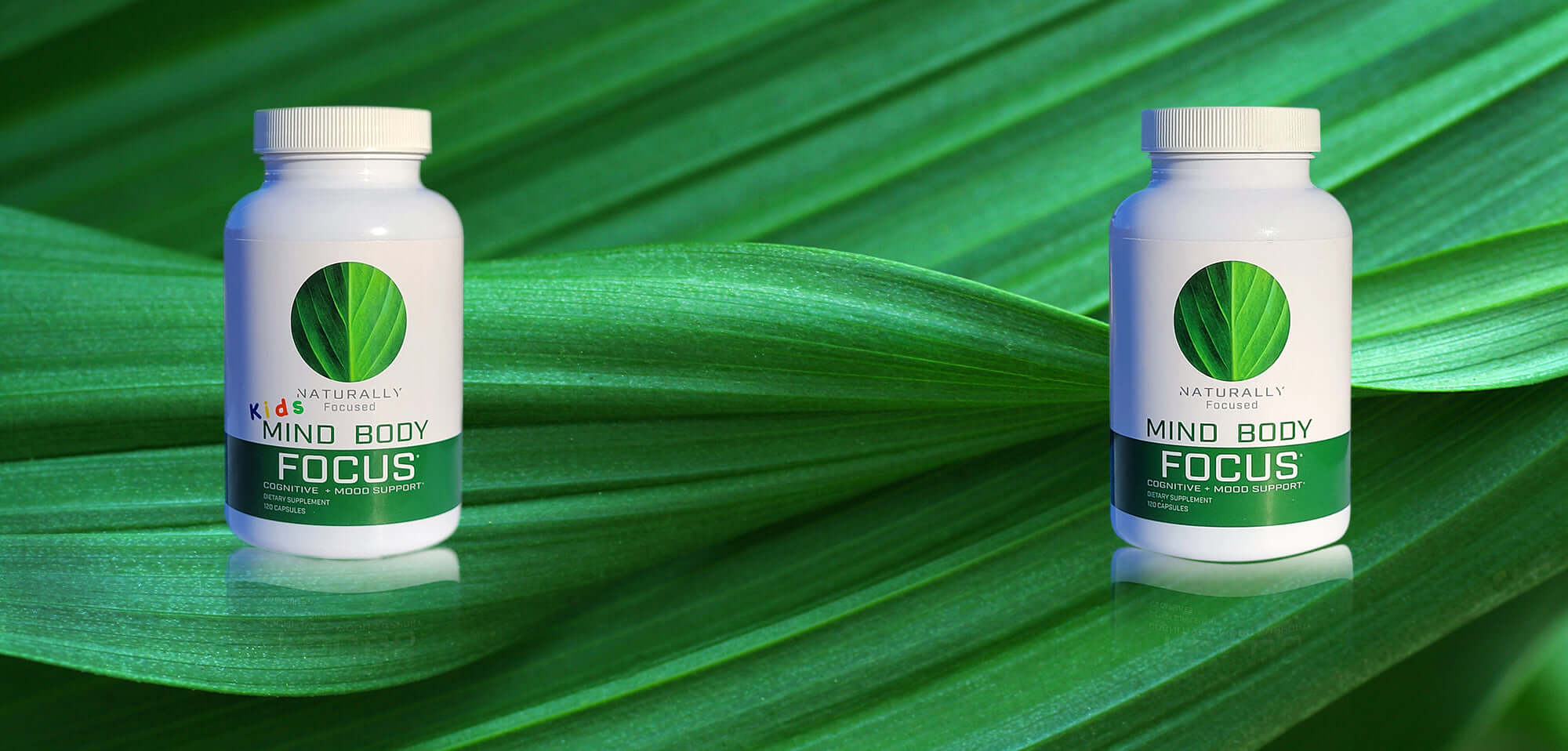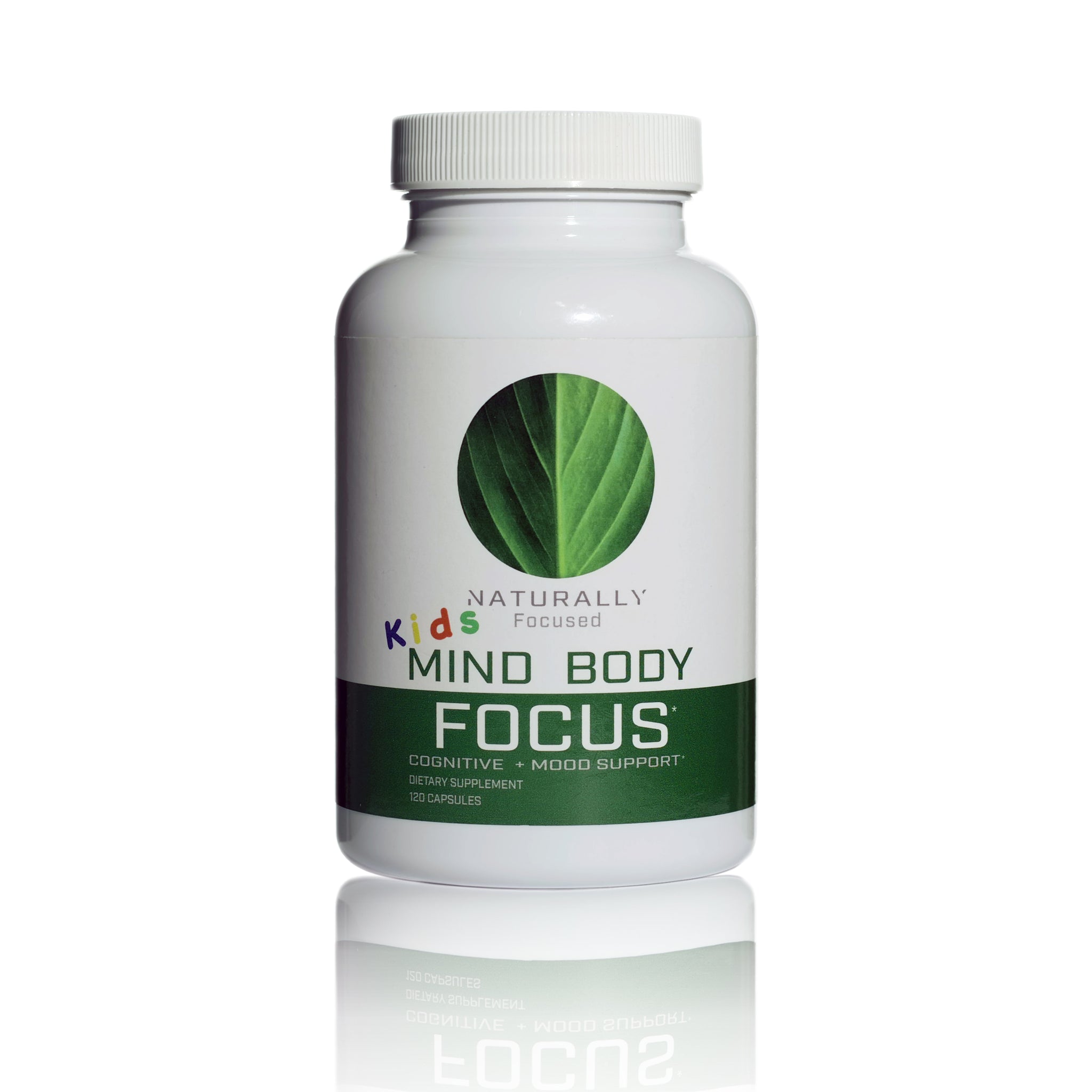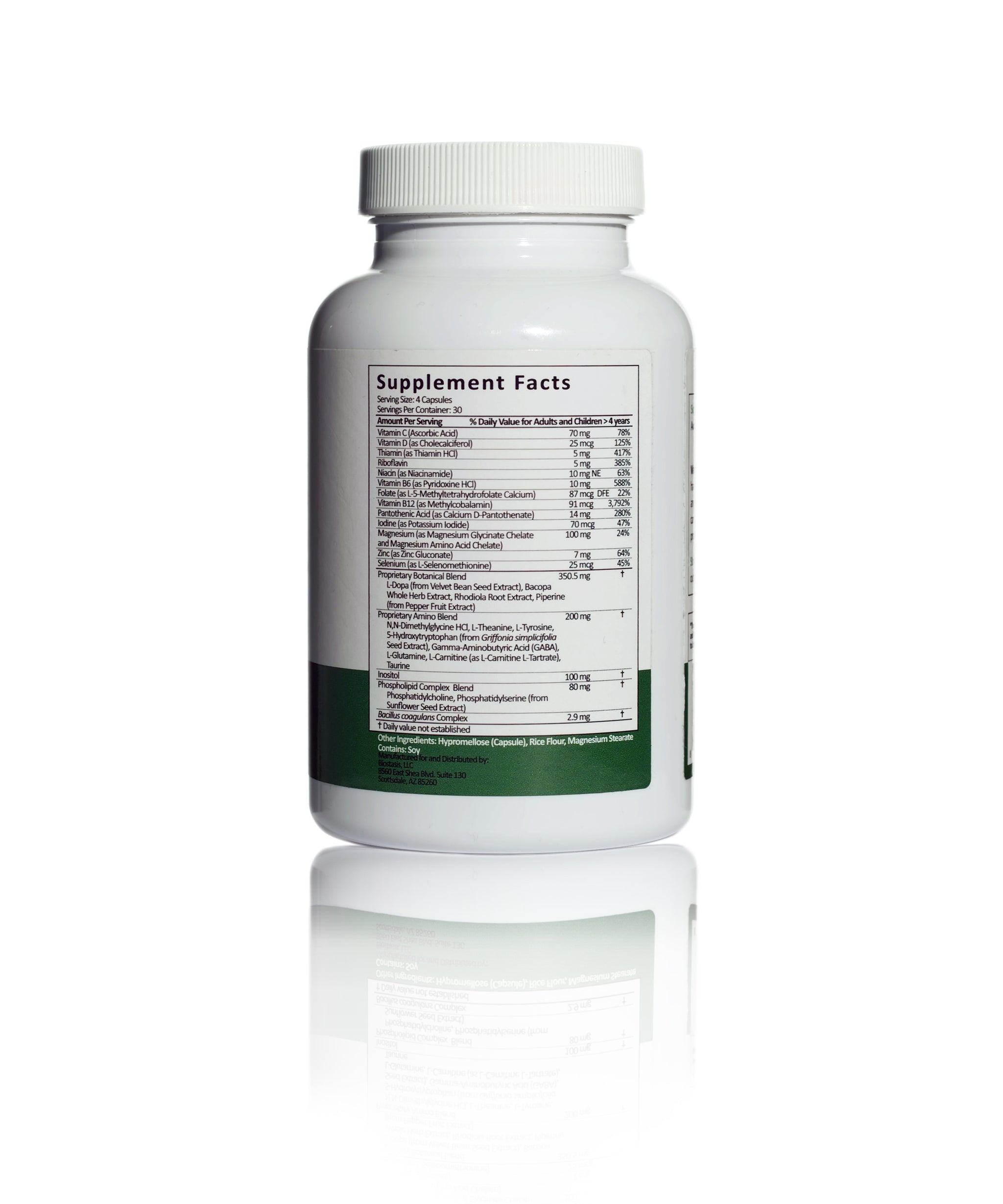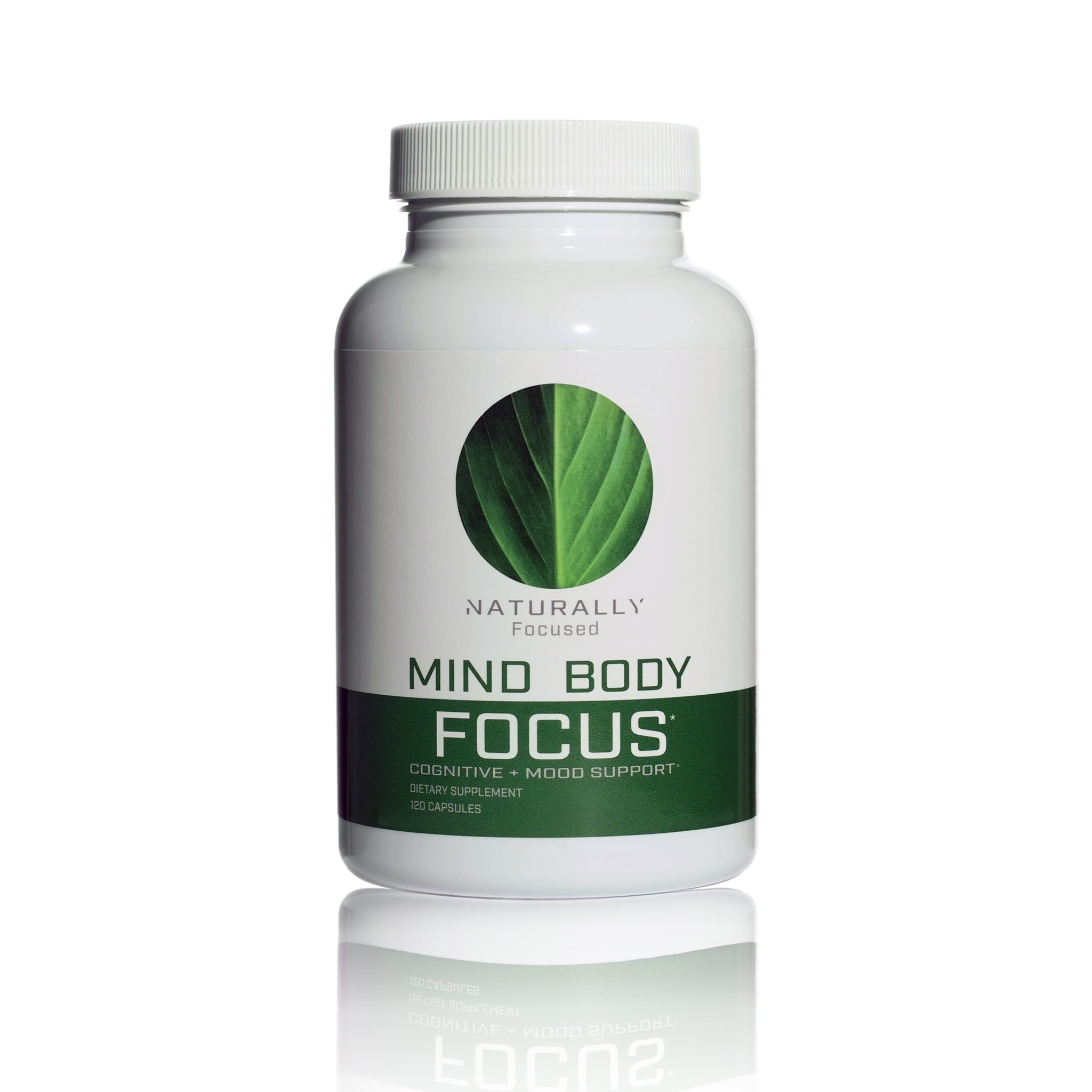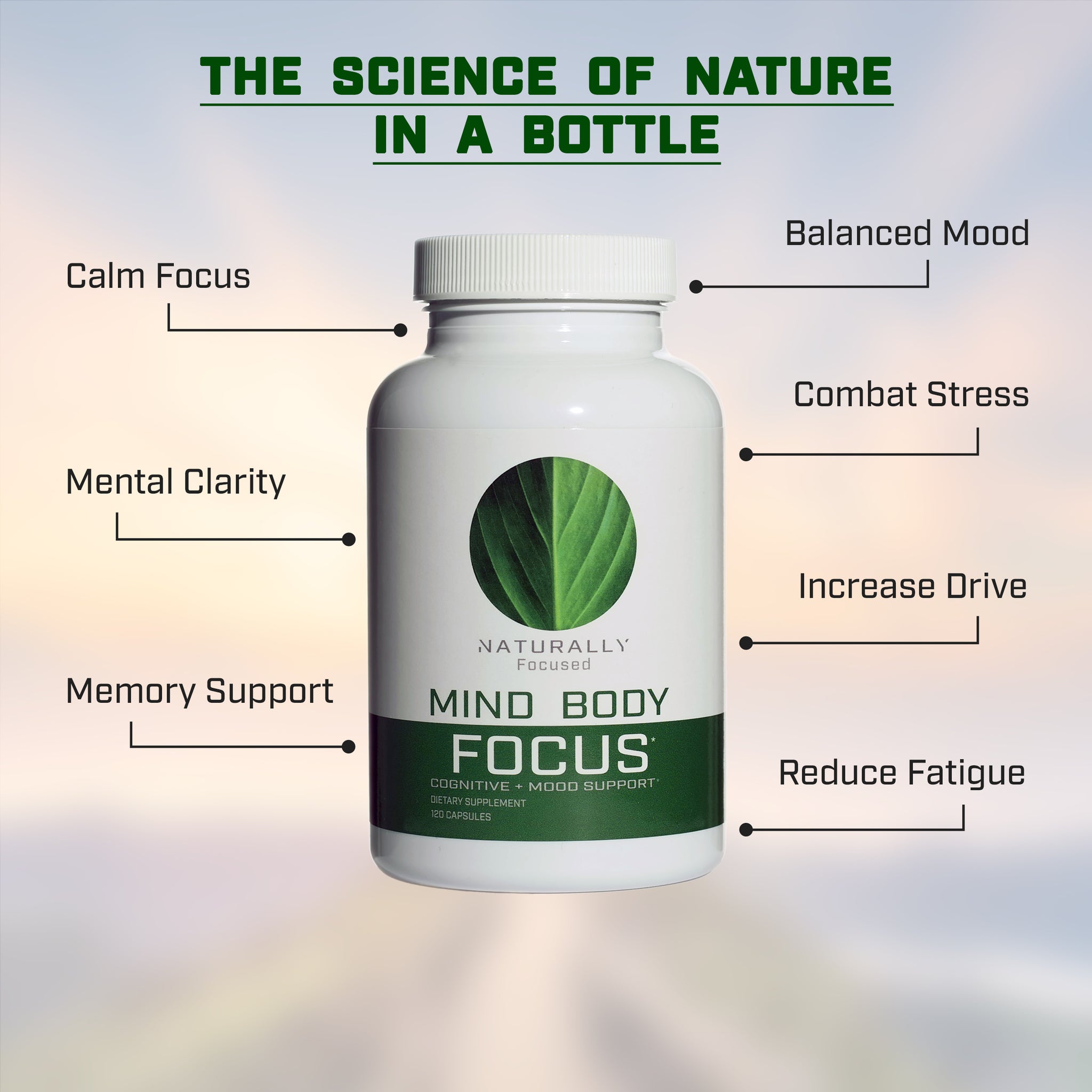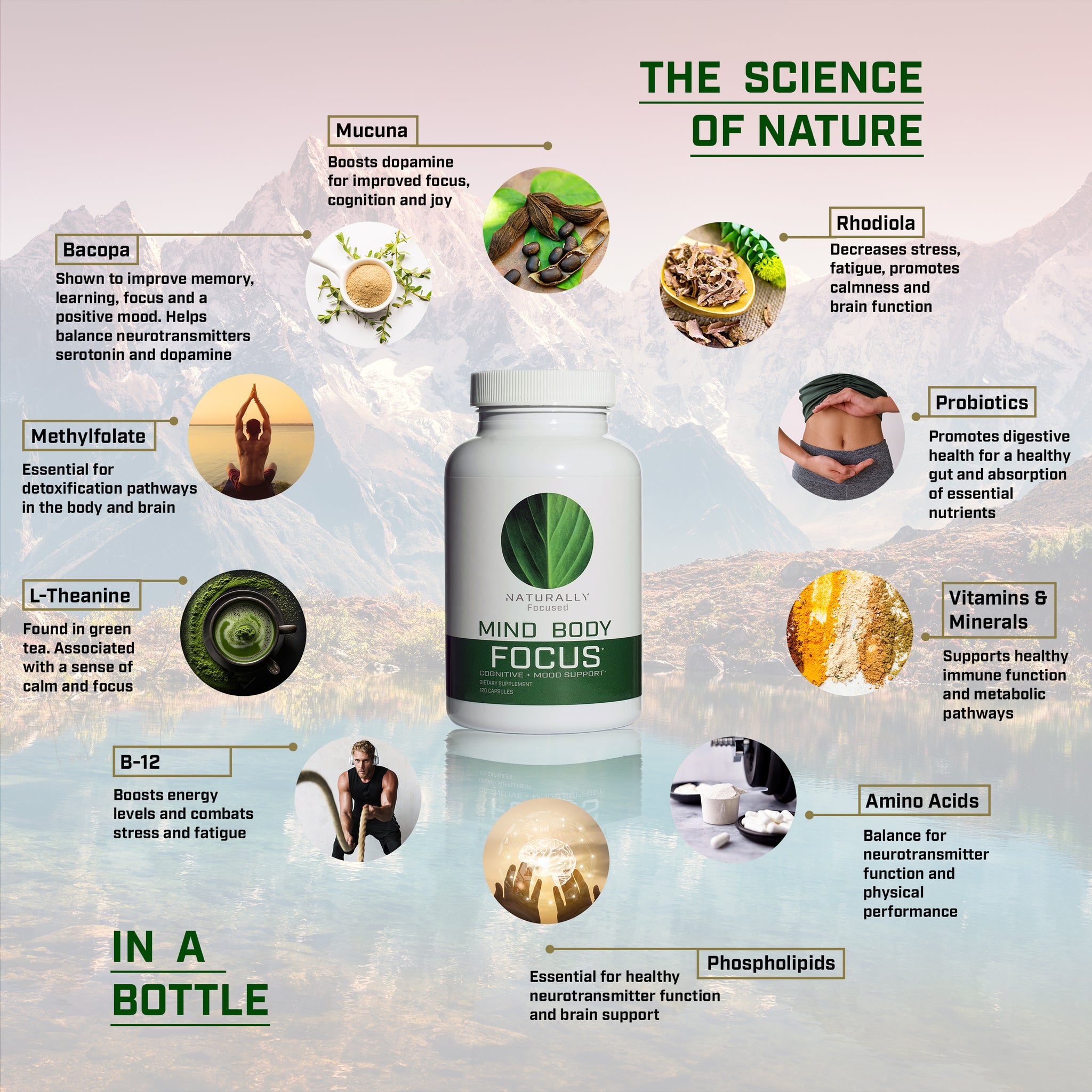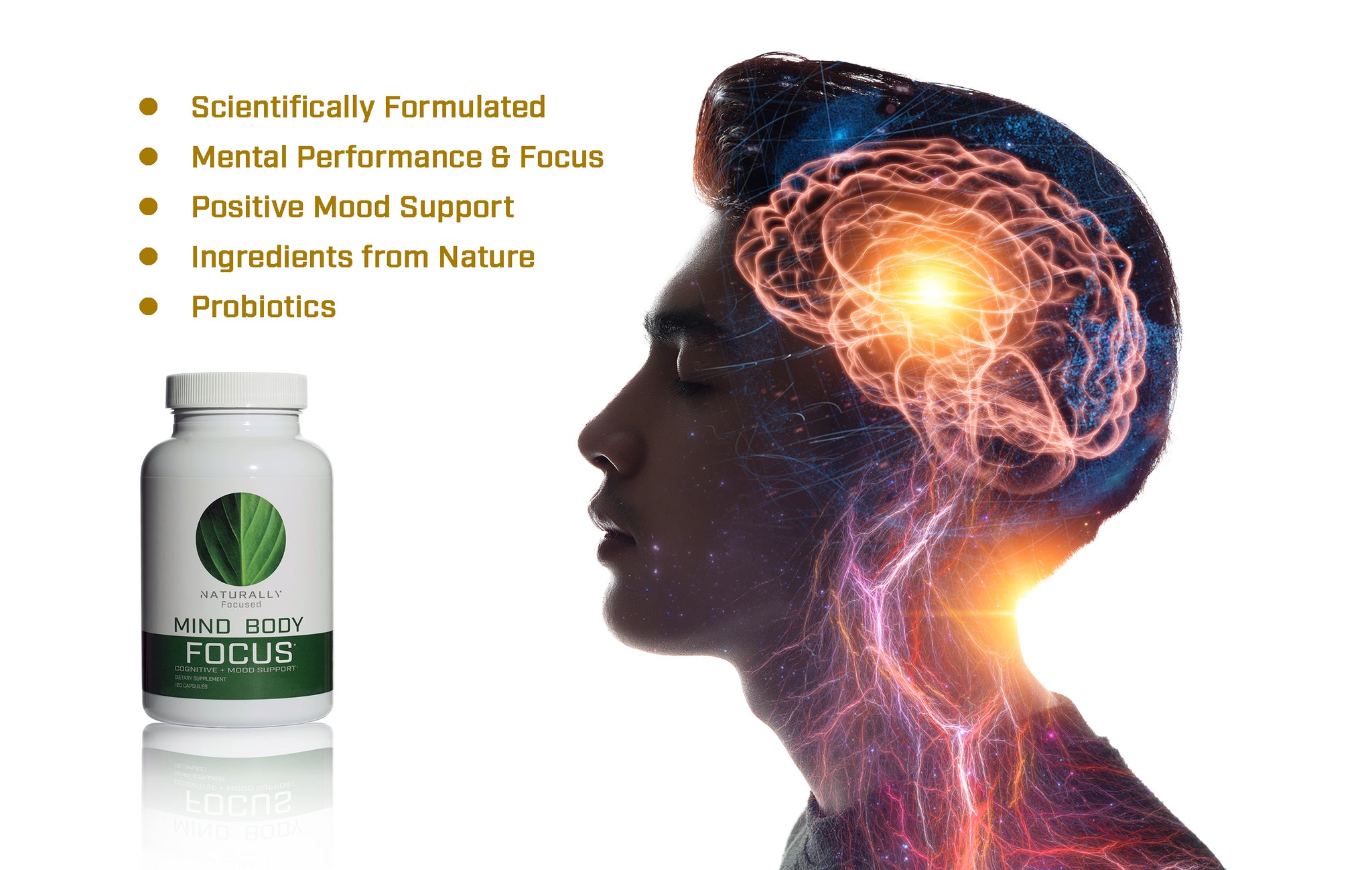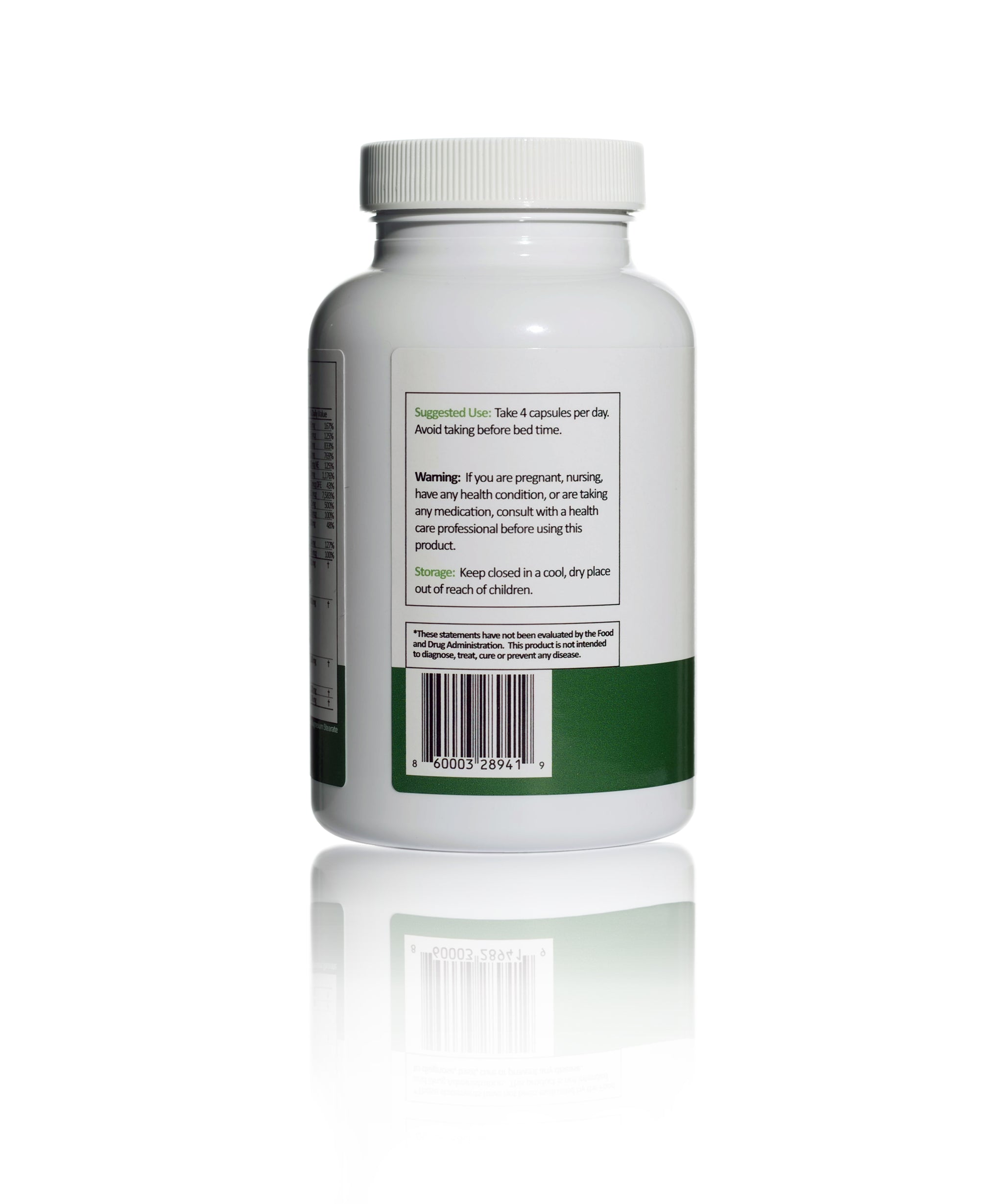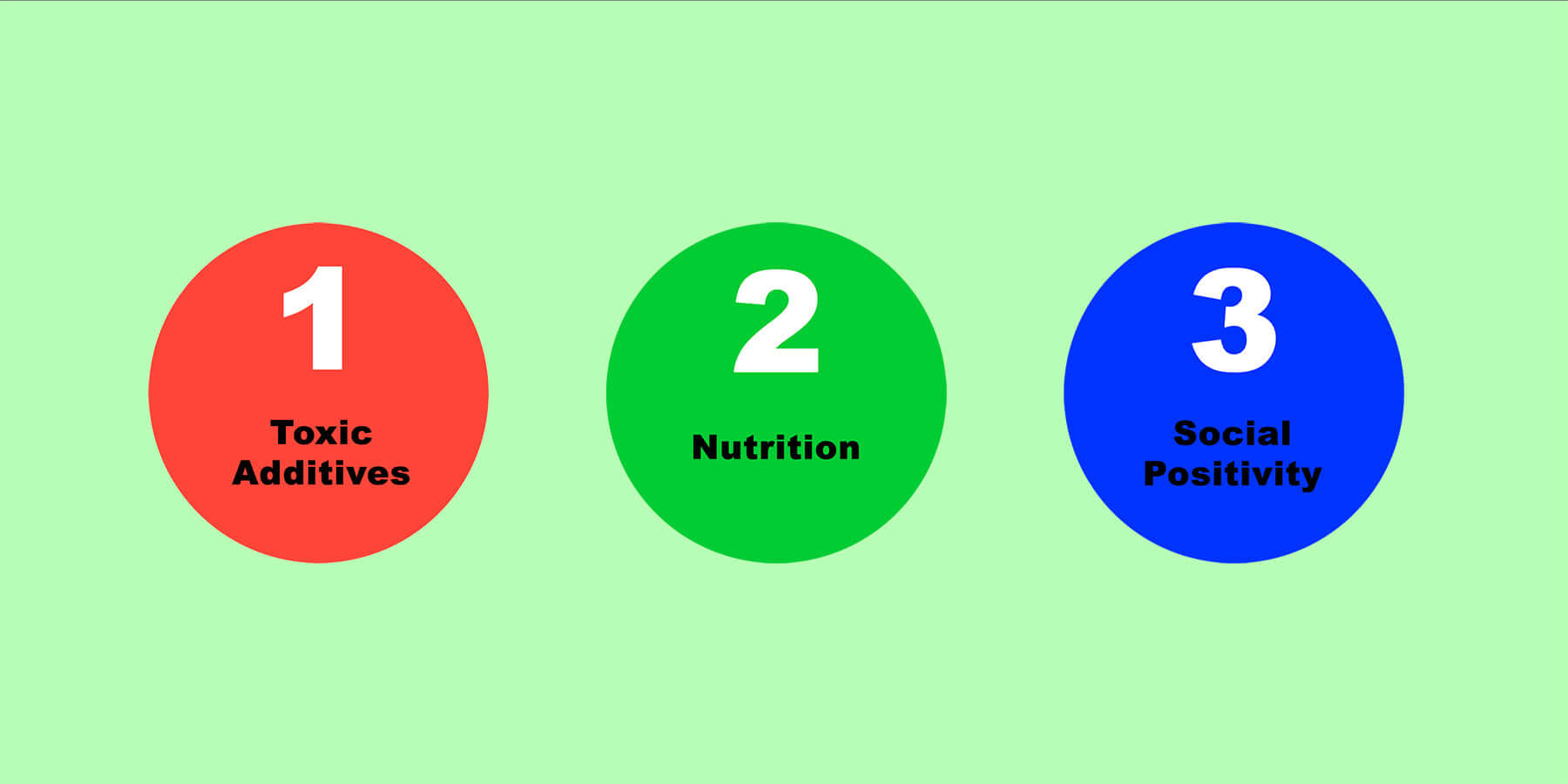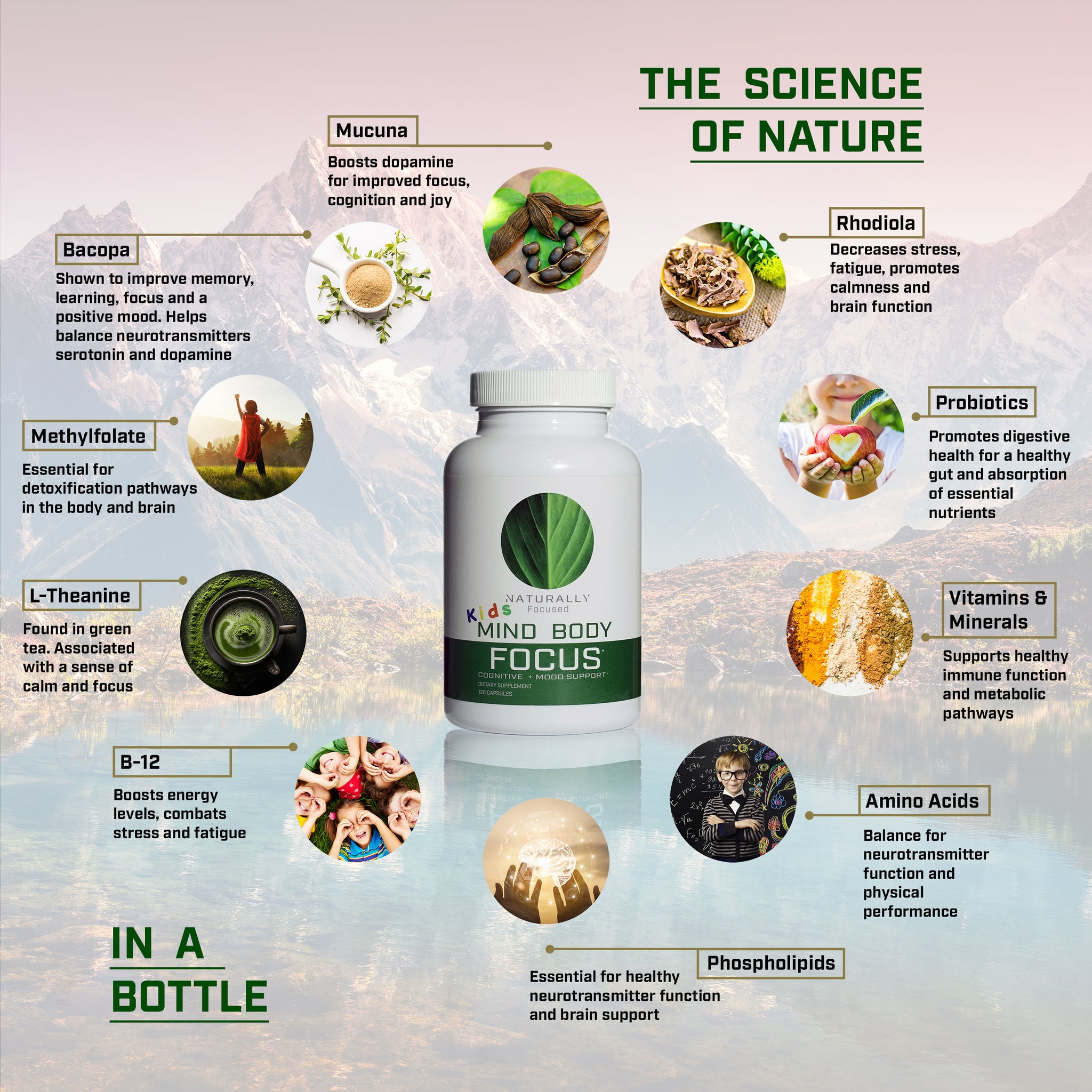
Natural Supplements for ADHD Child & Adult Ages, ADHD Vitamins & Testing
Studies show that natural adhd supplements can improve focus, learning ability, memory and balance mood while reducing symptoms of Attention Deficit Hyperactivity Disorder (ADHD, ADD) such as inattention, hyperactivity, anxiety, aggression and depression. Children and adults with ADHD have a unique brain chemistry with a unique set of nutritional needs. Naturally Focused supplements are the best natural supplements for ADHD child and adult age groups, made from natural and organic ingredients with no preservatives, dyes, dairy, gluten or GMOs.
Mind Body Focus
Mind Body Focus is a comprehensive nutritional supplement with a powerful formula containing natural and nootropic ingredients to support focus, memory, learning, cognition and a positive mood.*
Focus Packs
Targeted nutrition, natural supplements for ADHD, vitamins, omega 3 oils, probiotics, amino acids, detoxifiers and focus supplements.
Focus + Memory + Mood
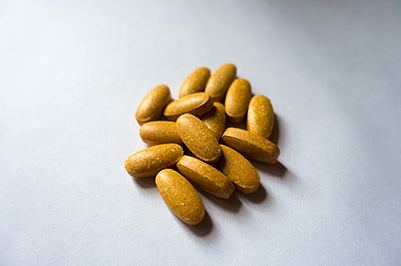
Multi-Vitamin
Vitamins and minerals are the building blocks for every function in the human brain and body. Studies show that supplementation of vitamin B6 and magnesium alone improve behavior, decrease anxiety and aggression and increase attention.
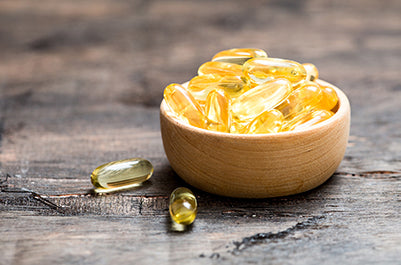
Omega 3 Oils
DHA is an omega-3 fatty acid that is the primary structural component of the human brain. It is found in mother's milk and fish oil. Low levels of DHA are associated with poor reading, memory, behavioral problems and more. EPA is another omega-3 oil, studies have shown it's potential in treating depression and it is a powerful antioxidant.
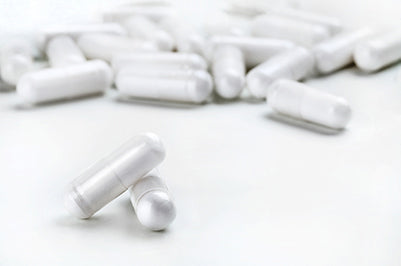
Probiotics
Studies have also shown that supplementing with probiotics can lower improve symptoms of stress, depression and anxiety. These beneficial bacteria occur naturally in the human digestive tract and attack yeast, unwanted destructive bacteria and toxins.
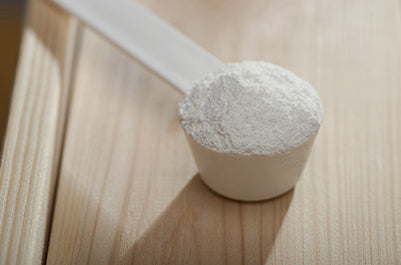
Neurotransmitters
Neurotransmitters are the little messengers of the nervous system and allow the brain to function correctly. They are essential to a positive mood, sense of calm, focus and memory. Made from amino acids, they can be true natural focus supplements.

Toxic Food Additives
Artificial colors, artificial flavors and preservatives from the diet and artificial colors, and harsh chemicals from personal hygiene products are linked to hyperactivity. Your child's hyperactivity may be a simple problem. There are close to 15,000 chemical food additives made in laboratories that food manufactures put in our foods to improve taste, appear more fresh, be more colorful and last longer. Some of these chemicals include colors made from coal-tar and petrochemicals, flavors made from petroleum and paper factory waste, gasses to stop fruit from ripening and countless other carcinogenic preservatives. These synthesized additives are legally permitted to be contaminated with byproducts including lead, mercury and arsenic. These byproducts are linked to hyperactivity, lack of focus, Alzheimers and more. You can begin to recognize some of these additives by reading labels on food at the supermarket. The human skin can absorb any chemical or dye that in comes into contact with. Some examples could be blue toothpaste, red shampoo or even colored vitamins that you buy at the drug store. The ingredients should be listed labels on food, skin products, cleaning and hygiene products that you buy and use. You don't have to stop eating certain types of foods but, you can recognize and select the natural version. Eliminating these toxins may be one of the simplest ways to increase focus naturally. For more information and help about how to identify and eliminate these additives, please visit our Food Additives Quick-List. The best resource for identifying these additives is The Feingold Association at feingold.org.
As a good rule of thumb, artificial colors are typically designated by a color followed by a number such as Red No.2 which was banned after a large controversy and tests showing that it caused cancer and stillbirths in rats. Dyes like Yellow 5 have actually been banned in Austria, Norway and other European countries but is still legal in the US and packaged in American foods. These synthetic colors have been linked with hyperactivity in children and cancer since the seventies. They are used in snacks, deserts, meats and even oranges to appear more orange.
Artificial flavors are typically be designated as, artificial flavor. Sometimes a dead give away will be the front of the box that will state, artificially flavored. These flavors are synthetic and toxic.The third major group to eliminate is preservatives. Here are a few of the most common, BHT, BHA and TBHQ. Preservatives have been linked with cancer, heart damage and ADHD. Some artificial sweeteners such as aspartame, sorbitol, saccharin and sucralose are neurotoxins and can have an adverse affect on the brain. Here is a quick list of some of the symptoms associated with food additives aside from hyperactivity: fatigue, asthma, skin rashes, eczema, headaches, thyroid disfunction, dizziness, hallucinations, estrogen imbalance, high cholesterol, liver, heart, testicle and kidney damage, obesity, stroke, difficulty breathing, gastrointestinal disease, diarrhea, incontinence, tumors and cancer.
Targeted Nutrition: ADHD Supplements
Focus Packs are ADHD supplements for adults and children and are available in our online store. Focus packs contain four different supplements, a multi-vitamin & mineral, neurotransmitters, probiotics and omega 3 oils. Imagine your human mind and body as a complicated car that requires thousands of different fuels and fuel combinations to run smoothly. Removing just one of these fuels would be devastating and your complicated car would break down and not work properly. If the body's digestion is not functioning at 100%, it cannot process the nutrients it needs from your food. A compromised digestive system is common in ADHD individuals and creates unhealthy environment in the digestive tract. This encourages destructive bacteria and yeast to populate. The result is a decline in absorption and biochemical synthesis. Below see all the metabolic pathways that must take place for your brain and body to function properly. Imagine what would happen by removing just one ingredient.

Supplement 1: Multi-Vitamin, Mineral & Antioxidant
The importance of vitamins & minerals simply couldn't be overstated. They are the fundamental building blocks for everything. They form our bones, tissues and bio-chemicals. There is nothing more basic. Taking a good multi-vitamin and mineral supplement daily is essential. Studies show that supplementation of vitamin B6 and magnesium alone improve behavior, decrease anxiety and aggression and increase attention. Below are examples of some minerals, antioxidants and vitamins for ADHD. This information should aid your search for ADHD vitamins that support focus, memory and mood.
Vitamin B-Complex
Vitamin B3 - Niacin, is crucial for metabolic reactions as well as nucleic acid synthesis. It can help relieve anxiety, irritability, depression as well as poor concentration.
Vitamin B6 - Pyridoxal 5'-phosphate, is essential for the synthesis of neurotransmitters which promote a positive mood, mental focus and a sense of calm. These neurotransmitters include dopamine, serotonin and GABA. Some studies have shown Vitamin B6 to improve memory. It is also fundamental for the production of oxygen-carrying hemoglobin which are necessary to maintain energy levels and concentration. B6 could be considered among the focus vitamins.
Vitamin B9 - Folate. You may have noticed that none of our supplements contain folic acid. The reason is that folic acid is actually a synthetic folate and is poorly utilized by the human body. Folate is one of the most important nutrients required for mental and physical functionality. It is found naturally in uncooked leafy greens and the word folate itself is derived from the Latin word folium which means leaf. A substantial percent of the population have a genetic mutation that inhibits their ability to convert synthetic folic acid or folate into the usable form, 5-methyltetrahydrofolate also known as 5-MTHF. 5-MTHF is critical to many functions in the body such as the production of neurotransmitters and detoxification. Folate helps to maintain healthy levels of oxygen in our bloodstream to combat stress and tiredness. We know that both neurotransmitter function and detoxification are critical to individuals with ADHD. 5-MTHF can be found in all of the multivitamin supplements that we carry. To learn more about 5-MTHF and this genetic mutation, please visit http://mthfr.net.
Vitamin B12 - Cobalamin is essential for memory and cognitive function. It is also a fundamental part of the methylation cycle which helps detox heavy metals, regulates gene expression, RNA processing and neurotransmitter production. B12 could be considered one of the best vitamins for focus.
Vitamin C - Ascorbic acid aids in the synthesis and catabolism of tyrosine to the neurotransmitter dopamine and ultimately norepinephrine. Altered levels of dopamine are associated with ADHD, attention, behavior and working memory. Dopamine is possibly the most significant neurotransmitter when discussing ADHD or ADD.
Vitamin D - This vitamin is needed for the absorption of magnesium and zinc. Together with omega-3 fatty acids, Vitamin D is also essential to the synthesis of serotonin which regulates mental skills, attention and social behavior.
Vitamin E - This vitamin is an antioxidant that protects the neurons from oxidative stress. It has been studied for the treatment of Alzheimers and memory loss.
Magnesium - Studies have shown that magnesium reduces hyperactivity in children diagnosed with ADHD. It can relax muscles, build strong bones and is one of the most highly required minerals by the human body. Magnesium has also been shown to boost cognitive abilities of the brain. Low levels of magnesium have been directly linked to depression.
Zinc - This mineral is required for the catalytic activity of roughly 100 enzymes. It plays a role in DNA synthesis, wound healing and proper immune function. Zinc along with magnesium are needed to make and regulate melatonin which synchronizes the body's circadian rhythms for sleep. Studies have also shown an improvement in ADHD symptoms in individuals taking zinc along with magnesium and calcium.
Antioxidants - Individuals diagnosed with ADHD are believed to have more oxidative stress than those without the diagnosis. Antioxidants like Vitamin A, Vitamin C, glutathione and others help mitigate the damage done by destructive free-radicals in the brain and body. Natural ADHD medicines and Herbal remedies can also help with issues of toxcitity.
Supplement 2: OMEGA 3 OILS
DHA is an Omega-3 oil (Essential Fatty Acid) that is the primary structural component of the human brain. It is found in mother's milk and fish oil. Clinical studies have shown it to decrease heart rate, improve memory and improve learning. Studies have also shown Omega-3 supplementation to decrease symptoms of inattention in children. Individuals with higher levels of DHA have been observed to perform better on tests of nonverbal reasoning and mental flexibility, working memory, and vocabulary. Tests have shown that children diagnosed with ADHD have lower levels of these fatty acids in their blood than children not diagnosed with ADHD. In a recent article, Time Magazine wrote about a study done by Oxford University that found that when nine year olds with the lowest level reading skills supplemented their diets with Omega-3 oils, they were able to excel their reading skills and development at even a faster rate that the kids at the top of the class. Double-blind placebo-controlled studies also showed Omega-3s to increase working memory, improve parent-rated behavior and reduce aggression in children. Studies in mice have even shown DHA to inhibit the growth of cancer cells. Low levels of DHA are associated with poor reading, memory, behavioral problems and more. EPA is another Omega-3 fatty acid and studies have shown the potential of treating depression with supplementation. It is a powerful antioxidant. DHA and Omega-3 oils can be one of the best focus supplements for mental acuity and cognitive function.
Supplement 3: PROBIOTICS
Right now your intestines are teaming with trillions of healthy bacteria. These strains of beneficial bacteria can be found in probiotic supplements. Beneficial bacteria improve immune function and reduce the chance of common illnesses and conditions. Studies have also shown that supplementing with probiotics can lower symptoms of stress, depression and anxiety by lowering the hormone corticosterone. Moreover, research shows that taking probiotics regularly can affect neurotransmitter and brain function. Probiotic supplements have even been shown to reduce the stress of students taking examinations. Unfortunately, many ADHD kids have low amounts of these healthy bacteria in their digestive tracts.
Healthy bacteria may sound strange but, we need these bacteria to help us digest food and protect our body against invading pathogens such as unhealthy bacteria that can cause infection. Unfortunately these healthy bacteria are under constant attack everyday from the water we drink, medicine we take and foods we eat. Unfiltered city water can contain chlorine and other chemicals which can kill off our healthy intestinal bacteria. The use of antibiotics can also have a negative effect on the population of these necessary bacterium.
Eating foods high in sugar will feed populations of yeast in your digestive tract. Yeast or candida is a fungus and is one of the destructive microorganisms that can also increase when your digestive system is under stress from food allergies and bolstered by the use of antibiotics. Antibiotics target the negative types of bacteria that cause infections that we human are sometimes exposed to. Unfortunately, antibiotics do not discriminate between types of bacteria and also kill the positive, beneficial bacteria that naturally occur and live in your digestive tract. These beneficial bacteria aid and assist with digestion and maintain a healthy environment for digestion to take place. When your system is under stress or the beneficial bacteria die off from antibiotic use, suddenly there is room for new organisms like yeast and unwanted, destructive bacteria to populate. This begins a downward spiral of digestive issues including malabsorption, indigestion, constipation, Irritable Bowl symptoms, increased food sensitivities and any of the problems discussed earlier. Yeast has been linked to behavioral problems, ADHD and even autism. Signs that your child has yeast includes antibiotic use, irritability, mood swings, bed wetting, headaches, sleep disturbances, fatigue, eczema, rashes, cradle cap, red ring around the anus, thrush, peeling feet, discolored nails, bloating, constipation and diarrhea.
Taking probiotics can repopulate the gut with beneficial bacteria. This "good" bacteria will gobble up the yeast and "bad" bacteria to eliminate them from the body to create a positive environment in the digestive tract once again. This process can take time. Remember the digestive system is the gateway to all other systems in the body. In many cases the use of dietary fiber supplements is helpful when used in conjunction with the probiotics. It will help move debris and toxic build-up through the intestines where it eventually be eliminated in stool. Digestive enzymes can also be very helpful in cleaning up the digestive tract.
Supplement 4: Neurotransmitters
Dopamine is possibly the most talked about subject when it comes to ADHD. Understanding how it works will help you understand those diagnosed. Dopamine is a neurotransmitter that plays a major role in executive brain function, learning, memory, reward, mood and motivation. There are numerous neurotransmitters delivering specific messages throughout your nervous system and brain. Without them, your nervous system simply wouldn't work. Neurotransmitters are naturally made in the body from the amino acids that we eat in the form of protein (such as meat). Dopamine may be referred to as the feel-good neurotransmitter. When you encounter certain types of stimulation like eating your favorite food, or listening to your favorite song, dopamine is released in the brain and you feel good. In the ADHD brain, there is typically less dopamine than in other brains. The result is someone that is extremely bored by everyday tasks and topics. You may have noticed your ADHD child's ability to focus very deeply on topics or activities that they are interested in. For your child, those topics or activities likely stimulate the release of dopamine which in turn motivates them to continue. A simple summation of the ADHD individual would be someone who is constantly under-stimulated.
One way to increase the level of dopamine in the brain through natural supplementation of amino acids such as phenylalanine, tyrosine and levodopa (L-DOPA). These amino acids are converted into dopamine inside the body. L-DOPA can be converted directly into dopamine unlike phenylalanine and tyrosine making it one of the most efficient dopamine supplements. Naturally occurring L-DOPA can be found in the mucuna pruriens plant grown in tropical areas of Africa and Asia and found in various supplements.
Serotonin is another important neurotransmitter associated with a positive mood and is synthesized from 5-HTP (5-hydroxytryptophan). It is very important to have balanced neurotransmitter function. Amino acids can be some of the best supplements for focus.
L-Theanine is an amino acid that can be found in green tea and is know for it calming effects as well as it's ability to support focus.
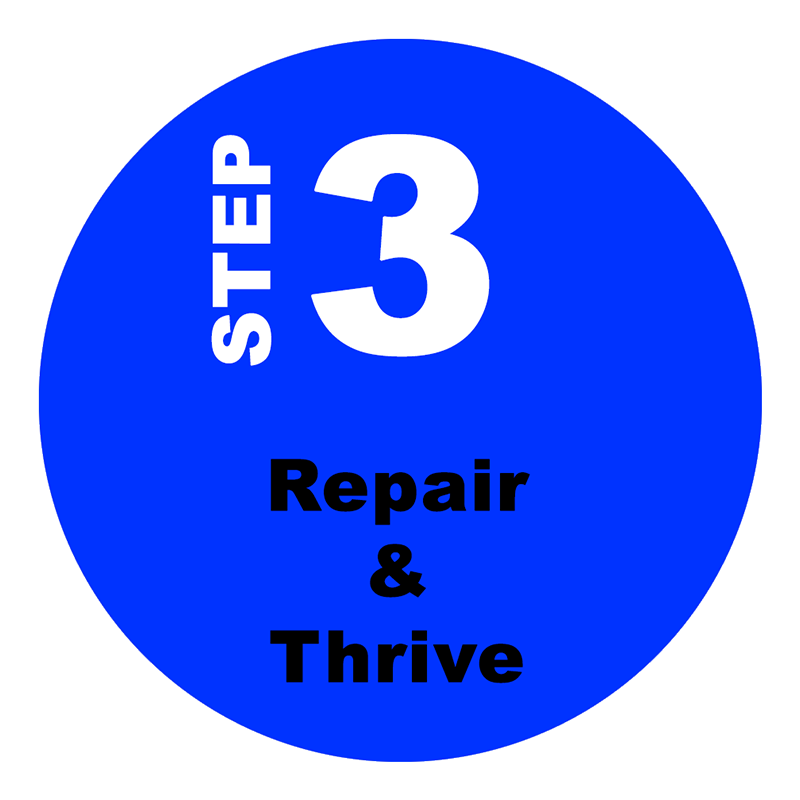
Social Positivity for ADHD
Let’s be positive. The stigma associated with ADHD can be very damaging especially to a child’s sensitive self esteem. It is important to never make anyone feel bad about their condition. It is very important to treat a struggling individual with positivity. Look for ways to lift them up, focus on things that they are good at and foster their talents. In fact there are some real positives.
The first step to being positive is having a better understanding where ADHD came from. Geneticists and anthropologists have discovered a gene they believe is responsible for ADHD and most interestingly, it was positively selected by evolution. This means that people with the gene had a better chance for survival when most humans were hunting and gathering as a lifestyle. People with ADHD generally have traits that would have been very advantageous to that lifestyle but, unfortunately those same traits may not be very helpful in a classroom setting.
Today ADHD individuals can be very well adept to creative pursuits like art, music and even business. Hyperfocus is associated with ADHD individuals and can be described something like tunnel vision. It allows someone to focus very deeply and intensely on something they are interested in. Again, this may be difficult to manage in the classroom however, if turned in the right direction, hyperfocus can be a very positive tool for success.
There may be changes and healing taking place. The body and mind time to repair. Pay attention to positive changes in your child's behavior, performance at school, interactions with others and changes in your own personal relationship with your child. Look for positive developments in your child's overall health, an improved immune system and better digestion. Look for visible problems such as aggression, hyperactivity, fatigue, lack of focus, rashes, constipation, diarrhea, bed wetting, headaches, belly aches and others should go away. This is a process change and discovery. You may find that modifications to your own or your family's lifestyle are necessary to accommodate your adapting child.
Possibly the most important aspect of this step is to understand what it means to have a diagnosis of ADHD. ADHD is less prevalent in adults than children. More than likely this is due to the mobility of the workforce versus the rigidity of the classroom. ADHD individuals that reach adulthood have the freedom to choose a line or work that better suits their unique attention patterns, abilities and interests. In this this type of atmosphere, ADHD symptoms become less of a hinderance and more of an advantage. ADHD individuals have been described as focusing on what captivates their interest and rather than what someone (e.g. a teacher) says is important. ADHD individuals typically excel in arts, sciences and any field or specialty that fascinates their interest.
At any point, choosing to ween your child from prior drugs or medications should be done slowly and under the supervision of a doctor or health care physician.
For individuals with severe and acute conditions we have specific testing for ADHD issues as well as herbal remedies for detoxification. The test kits are simple take-at-home tests which are then mailed to a corresponding lab. The cost includes a phone consultation with on of our doctors where he or she will go over your lab results with you.
ADHD Testing
Call our support line at (602) 469-5730 to set up a free consultation with one of our doctors who can recommend which tests may be right for you. All of our test can be conveniently taken at home.
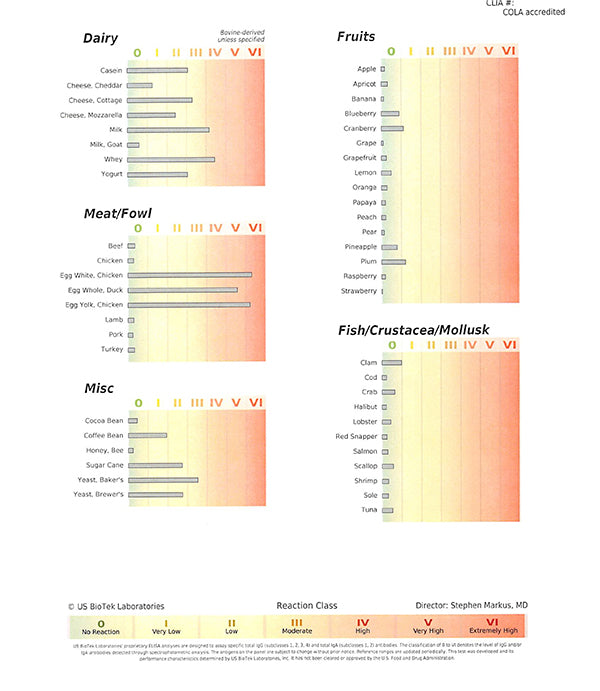
IGG Food Sensitivity Test
Our digestive tract is the gateway to the environment that surrounds us. Through eating and drinking we absorb most of all the nutrients to make our complex body operate. After food is processed in our intestines, these nutrients or fuels break down into thousands organic and inorganic chemicals and compounds to run all of our body's systems and functions. It is a complex symphony of bio-chemical pathways like a highly organized mess of dependent and codependent relationships. If we remove just one of the many ingredients such as an amino acid, these relationships can fall apart. This is essentially what happens when there is a digestive issue. Our digestive tract can no longer function properly and therefore cannot correctly process all the nutrients to support all of the other functions in the body including brain function.
ADHD kids almost universally have food intolerances/sensitivities and these sensitivities easily go virtually unnoticed by their parents and doctors. Food intolerances create inflammation in the gut and ultimately lead to digestive issues characterized by stomach pain, constipation, diarrhea, skin rashes, anxiety, behavioral problems and yeast overgrowth. The digestive tract can no longer absorb and process nutrients correctly. This leads to nutritional deficiencies in amino acids, vitamins, minerals, fatty acids and other nutrients needed for the mind and body to function correctly. It is a cycle that only spirals downward if not identified and resolved. Common foods that children have sensitivities to include dairy, gluten, soy, eggs and nuts. It is critical for your child to take a food sensitivity test and identify these silent irritants to his or her system.
Digestive enzymes will aid and assist your child's digestion and can also be very helpful in the case of food sensitivities.
Eliminate all foods causing intolerance and allergic reactions. These foods can cause disruptive immune responses in the body and have been linked to behavior.
Order TestOrganic Acids Test
This Organic Acids Test is the most important test in the Advanced Program. It will gauge the severity of yeast and harmful bacteria overgrowth in the digestive tract. These microorganisms can cause hyperactivity, fatigue, digestive disfunction and immune disfunction among other problems. They produce oxalates which can form destructive crystals that become deposited in the body's tissues. Recent research has revealed a correlation between high oxalate levels and Autism. Oxalates are also found in foods. This test will also allow us to look into your own unique metabolic profile and identify certain nutritional deficiencies. Once we find out what you or your child's specific nutritional deficiencies are, we can recommend specific supplements to counter those deficiencies.
Order Test

Neurotransmitter Test
We have discussed neurotransmitters and their importance more in our Focus Program. They are the messengers of your nervous system, made from amino acids, passing along signals from neuron to neuron. Without them, mental process would not take place. There are numerous neurotransmitters with many different jobs to do. ADHD kids and adults often have imbalances in the neurotransmitter dopamine as well as other potential imbalances. This test will detect healthy or unhealthy levels of various neurotransmitters. With this information we will know what specific amino acid supplements could help bring back healthy balance to these neurotransmitter levels.
Order TestHeavy Metal Test
Toxic metals from our modern environment and medicines are deposited into our tissues and brain. Every person has a different inherent, genetic ability to rid the body of these metals through the natural process of detoxification. If detox factors or ability are not favorable, these toxic metals can congregate in high levels and cause damage developmentally and neurologically. For individuals with high toxic levels, it is critical to aid the body through supplementation to detoxify the body of these metals. It is worth while to note here that individuals with high levels of oxalates could also be at a higher risk from metal toxicity being that oxalates can help to trap metals in the body.
Order Test
References
1. Lisa Y. Lefferts, M.S.P.H., edited by Michael F. Jacobson, Ph.D., and Laura MacCleery, J.D. (2015). Seeing Red: Time for Action on Food Dyes http://cspinet.org/reports/seeing-red-report.pdf
2. Bar M1, Efron M1, Gothelf D2, Kushnir J3 (Dec 2015). Amounts of artificial food colors in commonly consumed beverages and potential behavioral implications for consumption in children. http://www.ncbi.nlm.nih.gov/pubmed/24037921
3. Food Dye, https://en.wikipedia.org/wiki/Food_coloring
4. Study on the interaction of artificial and natural food colorants with human serum albumin: A computational point of view. http://www.ncbi.nlm.nih.gov/pubmed/25935119
5. Vojdani A, Vojdani C (2015). Immune Reactivity to Food Coloring http://www.ncbi.nlm.nih.gov/pubmed/25599186
6. Dwan Price,1,2 Leigh Ackland,1 and Cenk Suphioglu2 (Oct 2013). Nuts 'n' guts: transport of food allergens across the intestinal epithelium http://www.ncbi.nlm.nih.gov/pmc/articles/PMC3826608/
7. Pietschmann N (Jul 2015). Food Intolerance: Immune Activation Through Diet-associated Stimuli in Chronic Disease. http://www.ncbi.nlm.nih.gov/pubmed/26030116
8. Food Intolerance, https://en.wikipedia.org/wiki/Food_intolerance
9. Vitamin, https://en.wikipedia.org/wiki/VitaminB
10. Vitamins, https://en.wikipedia.org/wiki/B_vitamins
11. Niacin, https://en.wikipedia.org/wiki/Niacin
12. Vitamin B6, https://en.wikipedia.org/wiki/Vitamin_B6
13. Vitamin B12, https://en.wikipedia.org/wiki/Vitamin_B12
14. Spellicy CJ1, Northrup H, Fletcher JM, Cirino PT, Dennis M, Morrison AC, Martinez CA, Au KS (Dec 2012). Folate metabolism gene 5,10-methylenetetrahydrofolate reductase (MTHFR) is associated with ADHD in myelomeningocele patients. http://www.ncbi.nlm.nih.gov/pubmed/23227261
15. Nogovitsina OR, Levitina EV (Jan 2006). Effect of MAGNE-B6 on the clinical and biochemical manifestations of the syndrome of attention deficit andhyperactivity in children. http://www.ncbi.nlm.nih.gov/pubmed/16579066
16. Mousain-Bosc M1, Roche M, Rapin J, Bali JP (Oct 2004). Magnesium VitB6 intake reduces central nervous system hyperexcitability in children. http://www.ncbi.nlm.nih.gov/pubmed/15466962
17. Starobrat-Hermelin B1 (1998). The effect of deficiency of selected bioelements on hyperactivity in children with certain specified mental disorders. http://www.ncbi.nlm.nih.gov/pubmed/9857546
18. Vitamin C, https://en.wikipedia.org/wiki/Vitamin_C
19. Sezen H, Kandemir H, Savik E, Basmacı Kandemir S, Kilicaslan F, Bilinc H, Aksoy N (Feb 2016). Increased oxidative stress in children with attention deficit hyperactivity disorder. http://www.ncbi.nlm.nih.gov/pubmed/26886057
20. Joshi K1, Lad S, Kale M, Patwardhan B, Mahadik SP, Patni B, Chaudhary A, Bhave S, Pandit A (Jan 2006). Supplementation with flax oil and vitamin C improves the outcome of Attention Deficit Hyperactivity Disorder(ADHD). http://www.ncbi.nlm.nih.gov/pubmed/16314082
21. Deth RC1 (Nov 2013). Autism: a redox/methylation disorder. http://www.ncbi.nlm.nih.gov/pubmed/24416710
22. Garcia-Olivares J1, Torres-Salazar D, Owens WA, Baust T, Siderovski DP, Amara SG, Zhu J, Daws LC, Torres GE (Mar 2013). Inhibition of dopamine transporter activity by G protein βγ subunits. http://www.ncbi.nlm.nih.gov/pubmed/23555781
23. Hariri M1, Djazayery A2, Djalali M2, Saedisomeolia A2, Rahimi A3, Abdolahian E4 (Dec 2012). Effect of n-3 supplementation on hyperactivity, oxidative stress and inflammatory mediators in children with attention-deficit-hyperactivity disorder. http://www.ncbi.nlm.nih.gov/pubmed/24568073
24. Bradstreet JJ1, Smith S, Baral M, Rossignol DA (Apr 2010). Biomarker-guided interventions of clinically relevant conditions associated with autism spectrum disorders and attention deficit hyperactivity disorder. http://www.ncbi.nlm.nih.gov/pubmed/20359266, http://www.altmedrev.com/publications/15/1/15.pdf
25. Dvoráková M1, Jezová D, Blazícek P, Trebatická J, Skodácek I, Suba J, Iveta W, Rohdewald P, Duracková Z(Jun 2007). Urinary catecholamines in children with attention deficit hyperactivity disorder (ADHD): modulation by a polyphenolic extract from pine bark (pycnogenol). http://www.ncbi.nlm.nih.gov/pubmed/18019397
26. Pärtty A1, Kalliomäki M1, Wacklin P2, Salminen S3, Isolauri E1 (Jun 2015). A possible link between early probiotic intervention and the risk of neuropsychiatric disorders later in childhood: a randomized trial. http://www.ncbi.nlm.nih.gov/pubmed/25760553
27. Rucklidge JJ1. (2013) Could yeast infections impair recovery from mental illness? A case study using micronutrients and olive leaf extract for the treatment of ADHD and depression. http://www.ncbi.nlm.nih.gov/pubmed/23784606
28. Matsubara VH1, Bandara HM2, Mayer MP3, Samaranayake LP2 (Jan 2016). Probiotics as Antifungals in Mucosal Candidiasis. http://www.ncbi.nlm.nih.gov/pubmed/26826375
29. Kumar S1, Bansal A, Chakrabarti A, Singhi S (Feb 2013). Evaluation of efficacy of probiotics in prevention of candida colonization in a PICU-a randomized controlled trial. http://www.ncbi.nlm.nih.gov/pubmed/23361033
30. Köhler GA1, Assefa S, Reid G (Jul 2012). Probiotic interference of Lactobacillus rhamnosus GR-1 and Lactobacillus reuteri RC-14 with the opportunistic fungal pathogen Candida albicans. http://www.ncbi.nlm.nih.gov/pubmed/22811591
31. Matsubara VH1, Silva EG, Paula CR, Ishikawa KH, Nakamae AE (Apr 2012). Treatment with probiotics in experimental oral colonization by Candida albicans in murine model (DBA/2). http://www.ncbi.nlm.nih.gov/pubmed/22059932
32. Romeo MG1, Romeo DM, Trovato L, Oliveri S, Palermo F, Cota F, Betta P (Jan 2011). Role of probiotics in the prevention of the enteric colonization by Candida in preterm newborns: incidence of late-onset sepsis and neurological outcome. http://www.ncbi.nlm.nih.gov/pubmed/20410904
33. Ruiz-Sánchez D1, Calderón-Romero L, Sánchez-Vega JT, Tay J (Sep 2002). Intestinal candidiasis. A clinical report and comments about this opportunistic pathology. http://www.ncbi.nlm.nih.gov/pubmed/12715941
34. Linares DM1,2, Ross P2,3, Stanton C1,2 (Dec 2015). Beneficial Microbes: The pharmacy in the gut. http://www.ncbi.nlm.nih.gov/pubmed/26709457
35. Pace F1, Pace M, Quartarone G (Dec 2015). Probiotics in digestive diseases: focus on Lactobacillus GG. http://www.ncbi.nlm.nih.gov/pubmed/26657927
36. Uusitalo U1, Liu X1, Yang J1, Aronsson CA2, Hummel S3, Butterworth M1, Lernmark Å2, Rewers M4, Hagopian W5, She JX6, Simell O7, Toppari J8, Ziegler AG3,Akolkar B9, Krischer J1, Norris JM10, Virtanen SM11 (Jan 2016). Association of Early Exposure of Probiotics and Islet Autoimmunity in the TEDDY Study. http://www.ncbi.nlm.nih.gov/pubmed/26552054
37. José E. Belizário, Mauro Napolitano (Jun 2015) Human microbiomes and their roles in dysbiosis, common diseases, and novel therapeutic approaches http://www.ncbi.nlm.nih.gov/pmc/articles/PMC4594012/
38. Tanaka K1, Fujiya M2, Konishi H1, Ueno N1, Kashima S1, Sasajima J1, Moriichi K1, Ikuta K1, Tanabe H3, Kohgo Y4 (Nov 2015). Probiotic-derived polyphosphate improves the intestinal barrier function through the caveolin-dependent endocytic pathway. http://www.ncbi.nlm.nih.gov/pubmed/26459590
39. Messamore E1,2, McNamara RK3 (Feb 2016). Detection and treatment of omega-3 fatty acid deficiency in psychiatric practice: Rationale and implementation. http://www.ncbi.nlm.nih.gov/pmc/articles/PMC4748485/
40. Omega-3 fatty acids 'could improve reading and behaviour' (Sep 2012) http://www.ox.ac.uk/news/2012-09-07-omega-3-fatty-acids-could-improve-reading-and-behaviour
41. Bos DJ1, Oranje B1, Veerhoek ES1, Van Diepen RM1, Weusten JM1, Demmelmair H2, Koletzko B2, de Sain-van der Velden MG3, Eilander A4, Hoeksma M4,Durston S1 (Sep 2015). Reduced Symptoms of Inattention after Dietary Omega-3 Fatty Acid Supplementation in Boys with and without Attention Deficit/Hyperactivity Disorder http://www.ncbi.nlm.nih.gov/pubmed/25790022
42. Patrick RP1, Ames BN1 (Jun 2015). Vitamin D and the omega-3 fatty acids control serotonin synthesis and action, part 2: relevance for ADHD, bipolardisorder, schizophrenia, and impulsive behavior. http://www.ncbi.nlm.nih.gov/pubmed/25713056
43. Milte CM1, Parletta N2, Buckley JD3, Coates AM3, Young RM4, Howe PR5 (Nov 2015). Increased Erythrocyte Eicosapentaenoic Acid and Docosahexaenoic Acid Are Associated With ImprovedAttention and Behavior in Children With ADHD in a Randomized Controlled Three-Way Crossover Trial. http://www.ncbi.nlm.nih.gov/pubmed/24214970
44. Szkup-Jabłońska M1 (2011). The effect of lead and cadmium on the lipid profile and psychosocial functioning of children with developmental disorders. http://www.ncbi.nlm.nih.gov/pubmed/23002671
45. Huss M1, Völp A, Stauss-Grabo M (Sep 2012). Supplementation of polyunsaturated fatty acids, magnesium and zinc in children seeking medical advice forattention-deficit/hyperactivity problems - an observational cohort study. http://www.ncbi.nlm.nih.gov/pubmed/20868469
46. Gustafsson PA1, Birberg-Thornberg U, Duchén K, Landgren M, Malmberg K, Pelling H, Strandvik B, Karlsson T (Jun 2010). EPA supplementation improves teacher-rated behaviour and oppositional symptoms in children with ADHD. http://www.ncbi.nlm.nih.gov/pubmed/20491709
47. Quintero J1, Rodríguez-Quirós J, Correas-Lauffer J, Pérez-Templado J (Sep 2009). Nutritional aspects of attention-deficit/hyperactive disorder. http://www.ncbi.nlm.nih.gov/pubmed/19728277
48. Johnson M1, Ostlund S, Fransson G, Kadesjö B, Gillberg C. (Mar 2009). Omega-3/omega-6 fatty acids for attention deficit hyperactivity disorder: a randomized placebo-controlled trial in children and adolescents.
49. Kidd PM1 (Sep 2007). Omega-3 DHA and EPA for cognition, behavior, and mood: clinical findings and structural-functional synergies with cell membrane phospholipids. http://www.ncbi.nlm.nih.gov/pubmed/18072818
50. Itomura M1, Hamazaki K, Sawazaki S, Kobayashi M, Terasawa K, Watanabe S, Hamazaki T (Mar 2005). The effect of fish oil on physical aggression in schoolchildren--a randomized, double-blind, placebo-controlled trial. http://www.ncbi.nlm.nih.gov/pubmed/15741051
51. Kidd PM (Oct 2000). Attention deficit/hyperactivity disorder (ADHD) in children: rationale for its integrative management. http://www.ncbi.nlm.nih.gov/pubmed/11056411
52. Richardson AJ1, Burton JR, Sewell RP, Spreckelsen TF, Montgomery P (Sep 2012). Docosahexaenoic acid for reading, cognition and behavior in children aged 7-9 years: a randomized, controlled trial (the DOLAB Study). http://www.ncbi.nlm.nih.gov/pubmed/22970149
53. Widenhorn-Müller K1, Schwanda S2, Scholz E3, Spitzer M4, Bode H2 (May 2014). Effect of supplementation with long-chain ω-3 polyunsaturated fatty acids on behavior and cognition in children with attention deficit/hyperactivity disorder (ADHD): a randomized placebo-controlled intervention trial. http://www.ncbi.nlm.nih.gov/pubmed/24958525, http://www.altmedrev.com/publications/5/5/402.pdf
54. Bollmann S1, Ghisleni C2, Poil SS3, Martin E4, Ball J5, Eich-Höchli D6, Edden RA7, Klaver P8, Michels L9, Brandeis D10, O'Gorman RL11 (Jun 2015). Developmental changes in gamma-aminobutyric acid levels in attention-deficit/hyperactivity disorder. http://www.ncbi.nlm.nih.gov/pubmed/26101852
55. Wu S1, Bellve KD2, Fogarty KE2, Melikian HE3 (Nov 2015). Ack1 is a dopamine transporter endocytic brake that rescues a trafficking-dysregulated ADHD coding variant. http://www.ncbi.nlm.nih.gov/pubmed/26621748
56. Xing B1, Li YC1, Gao WJ2 (Jan 2016). Norepinephrine versus dopamine and their interaction in modulating synaptic function in the prefrontal cortex. http://www.ncbi.nlm.nih.gov/pubmed/26790349
57. Erica Bowton,1,4 Christine Saunders,2 Kevin Erreger,1 Dhananjay Sakrikar,4 Heinrich J. Matthies,1 Namita Sen,5Tammy Jessen,2 Roger J. Colbran,1 Marc G. Caron,6 Jonathan A. Javitch,5 Randy D. Blakely,2,3,4 andAurelio Galli1,2,4 (Apr 2010). http://www.ncbi.nlm.nih.gov/pmc/articles/PMC2881830/
58. Stahl SM1 (Mar 2003). Neurotransmission of cognition, part 3. Mechanism of action of selective NRIs: both dopamine and norepinephrine increase in prefrontal cortex. http://www.ncbi.nlm.nih.gov/pubmed/12716261
59. Hinz M1, Stein A, Neff R, Weinberg R, Uncini T (Jan 2011). Treatment of attention deficit hyperactivity disorder with monoamine amino acid precursors and organic cation transporter assay interpretation. http://www.ncbi.nlm.nih.gov/pmc/articles/PMC3035600/, http://www.ncbi.nlm.nih.gov/pubmed/21326653
60. Brown JA1, Emnett RJ, White CR, Yuede CM, Conyers SB, O'Malley KL, Wozniak DF, Gutmann DH (Nov 2010). Reduced striatal dopamine underlies the attention system dysfunction in neurofibromatosis-1 mutant mice. http://www.ncbi.nlm.nih.gov/pmc/articles/PMC2957316/
61. Pine A1, Shiner T, Seymour B, Dolan RJ (Jun 2010). Dopamine, time, and impulsivity in humans. http://www.ncbi.nlm.nih.gov/pmc/articles/PMC3059485/
62. Vucetic Z1, Totoki K, Schoch H, Whitaker KW, Hill-Smith T, Lucki I, Reyes TM (Apr 2010). Early life protein restriction alters dopamine circuitry. http://www.ncbi.nlm.nih.gov/pmc/articles/PMC2873068/
63. Woods SK1, Meyer JS (Jun 2010). Exogenous tyrosine potentiates the methylphenidate-induced increase in extracellular dopamine in the nucleus accumbens: a microdialysis study. http://www.ncbi.nlm.nih.gov/pubmed/1760749 van Rooij
64. D1,2, Hartman CA1, van Donkelaar MM3, Bralten J3,4, von Rhein D2,4, Hakobjan M3, Franke B3,5, Heslenfeld DJ6, Oosterlaan J6, Rommelse N7,Buitelaar JK4,7, Hoekstra PJ1 (Oct 2015). Variation in serotonin neurotransmission genes affects neural activation during response inhibition in adolescents and young adults with ADHD and healthy controls. http://www.ncbi.nlm.nih.gov/pubmed/26428549
65. Lin SH1, Lee LT2, Yang YK1 (Dec 2014). Serotonin and Mental Disorders: A Concise Review on Molecular Neuroimaging Evidence. http://www.ncbi.nlm.nih.gov/pmc/articles/PMC4293164/
66. Thissen AJ1,2, Bralten J3,4, Rommelse NN1,2, Arias-Vasquez A1,3, Greven CU2,4,5, Heslenfeld D6, Luman M6, Oosterlaan J6, Hoekstra PJ7, Hartman C7, Franke B1,3, Buitelaar JK2,4. (Jan 2015) The role of age in association analyses of ADHD and related neurocognitive functioning: A proof of concept for dopaminergic and serotonergic genes. http://www.ncbi.nlm.nih.gov/pubmed/25586935
67. Van Mil NH1, Steegers-Theunissen RP2, Bouwland-Both MI3, Verbiest MM4, Rijlaarsdam J5, Hofman A6, Steegers EA7, Heijmans BT8, Jaddoe VW9, Verhulst FC10, Stolk L4, Eilers PH11, Uitterlinden AG12, Tiemeier H13 (Feb 2014). DNA methylation profiles at birth and child ADHD symptoms. http://www.ncbi.nlm.nih.gov/pubmed/24290898
68. Saha T1, Dutta S, Rajamma U, Sinha S, Mukhopadhyay K (Nov 2014). A pilot study on the contribution of folate gene variants in the cognitive function of ADHD probands. http://www.ncbi.nlm.nih.gov/pubmed/25079255
69. Dan Eisenberg, PhD, and Benjamin Campbell. San Francisco Medicine (Oct 2011). The Evolution of ADHD. http://evolution.binghamton.edu/evos/wp-content/uploads/2012/02/eisenberg-and-campbell-2011-the-evolution-of-ADHD-artice-in-SF-Medicine.pdf
70. Dopamine receptor D4, https://en.wikipedia.org/wiki/Dopamine_receptor_D4
71. Stacey Ageranioti Bélanger, MD PhD,1 Michel Vanasse, MD,1,2 Schohraya Spahis, MSc,2,3 Marie-Pierre Sylvestre, MSc,4 Sarah Lippé, PhD,1 François l’Heureux, MSc,1 Parviz Ghadirian, PhD,3 Catherine-Marie Vanasse, PhD,1 andEmile Levy, MD PhD2,3 (Feb 2009). Omega-3 fatty acid treatment of children with attention-deficit hyperactivity disorder: A randomized, double-blind, placebo-controlled study https://www.ncbi.nlm.nih.gov/pmc/articles/PMC2661342/
72. Elisabeth Toverud Landaas, Tore Ivar Malmei Aarsland, Arve Ulvik, Anne Halmøy, Per Magne Ueland, and Jan Haavik (Nov 2016). Vitamin levels in adults with ADHD. https://www.ncbi.nlm.nih.gov/pmc/articles/PMC5153567/
73. Takada M1, Nishida K2, Kataoka-Kato A1, Gondo Y1, Ishikawa H1, Suda K1, Kawai M1, Hoshi R3, Watanabe O3, Igarashi T3, Kuwano Y2, Miyazaki K1, Rokutan K2, (2016 Feb 20). Probiotic Lactobacillus casei strain Shirota relieves stress-associated symptoms by modulating the gut-brain interaction in human and animal models. https://www.ncbi.nlm.nih.gov/pubmed/26896291


